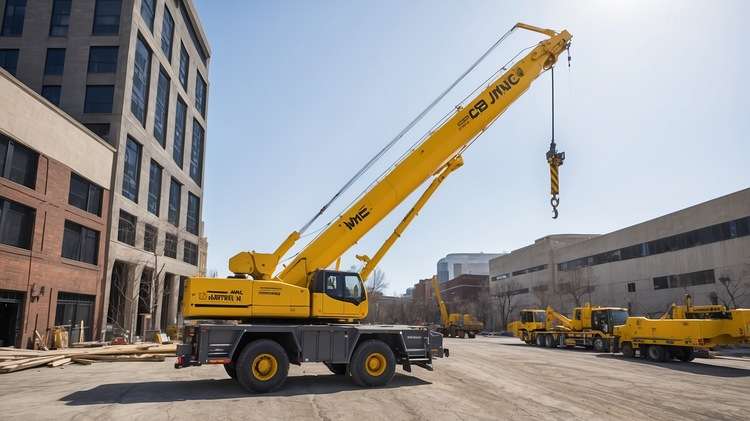How to work in construction companies in Toronto?
Construction companies in Toronto are looking for new workers. This sector offers stable opportunities with a constant demand for labor. What are the application requirements, and how can people with no experience take advantage of these opportunities? Find out everything you need to know here

What are the basic requirements for construction jobs in Toronto?
To work in construction in Toronto, you’ll need to meet certain basic requirements. First and foremost, you must be at least 18 years old and legally able to work in Canada. A high school diploma or equivalent is often preferred, but not always mandatory for entry-level positions. Physical fitness is crucial, as construction work can be demanding. Basic math skills and the ability to read blueprints are also valuable assets.
Safety certifications are essential in the construction industry. The Occupational Health and Safety Awareness Training is mandatory for all workers in Ontario. Additionally, obtaining a Working at Heights certificate is necessary for many construction roles. Some positions may require specific trade certifications or apprenticeships, depending on the specialized nature of the work.
How can inexperienced workers enter the Toronto construction industry?
For those without prior experience, there are several pathways to enter the construction industry in Toronto. One common route is to start as a general laborer or construction helper. These entry-level positions often require minimal experience and provide on-the-job training. As you gain experience, you can work your way up to more specialized roles.
Another option is to enroll in apprenticeship programs offered by various trade unions and educational institutions in Toronto. These programs combine classroom learning with hands-on experience, allowing you to earn while you learn. Some popular apprenticeships include carpentry, electrical work, plumbing, and masonry.
What building materials are commonly used in Toronto construction sites?
Understanding the building materials used in Toronto’s construction projects can give you an edge when seeking employment. Concrete is widely used for foundations, structures, and infrastructure projects. Steel is essential for high-rise buildings and large-scale construction. Wood remains popular for residential construction, especially in suburban areas.
Other common materials include glass for modern architectural designs, drywall for interior walls, and various types of insulation to meet energy efficiency standards. Familiarity with these materials and their applications can demonstrate your knowledge to potential employers.
How is worksite layout structured across different construction phases?
Construction sites in Toronto are typically organized into different zones based on the project phase and type of work being performed. In the initial stages, you’ll find areas dedicated to excavation and foundation work. As the project progresses, the site will evolve to include zones for structural work, electrical and plumbing installation, and interior finishing.
Safety is paramount, so you’ll observe clearly marked pathways, designated areas for material storage, and strategically placed equipment like cranes and scaffolding. Understanding this layout and structure can help you navigate job sites more effectively and safely.
What protective clothing and safety elements are visible on job locations?
Safety is a top priority on Toronto construction sites. You’ll notice workers wearing hard hats, steel-toed boots, and high-visibility vests or jackets. Depending on the task, additional personal protective equipment (PPE) may include safety glasses, hearing protection, gloves, and respiratory masks.
Visible safety elements on job sites include warning signs, barricades around hazardous areas, and fall protection systems such as guardrails and safety nets. Fire extinguishers and first aid stations are also prominently displayed. Familiarizing yourself with these safety measures and adhering to them is crucial for anyone working in construction.
What architectural styles are seen in Toronto’s residential and commercial development?
Toronto’s skyline showcases a diverse range of architectural styles. In the downtown core, you’ll find sleek glass and steel skyscrapers representing modern and postmodern designs. The city also boasts numerous heritage buildings, reflecting styles such as Victorian, Edwardian, and Art Deco.
In residential areas, you’ll encounter a mix of single-family homes, townhouses, and condominiums. Toronto’s housing stock includes charming Victorian-era houses, mid-century modern designs, and contemporary sustainable homes. Commercial developments often feature innovative designs that blend functionality with aesthetic appeal, incorporating green building practices and smart technology.
Understanding these architectural styles can be beneficial, especially if you’re interested in specializing in restoration work or modern construction techniques.
What urban infrastructure projects are observed in Toronto’s construction sector?
Toronto’s construction sector is not limited to buildings; it also encompasses significant urban infrastructure projects. The city is continuously working on improving its transportation network, including subway extensions, light rail transit projects, and road improvements.
Water infrastructure is another critical area, with ongoing projects to upgrade water mains, sewers, and stormwater management systems. The city is also investing in public spaces, parks, and recreational facilities to enhance the quality of life for residents.
These large-scale projects offer diverse job opportunities in areas such as civil engineering, project management, and specialized construction trades. Keeping abreast of these developments can help you identify potential career paths within Toronto’s dynamic construction industry.
In conclusion, working in construction companies in Toronto offers a wide range of opportunities for both experienced professionals and newcomers to the industry. By understanding the basic requirements, familiarizing yourself with common materials and practices, and staying informed about the city’s architectural trends and infrastructure projects, you can position yourself for a rewarding career in this thriving sector.




